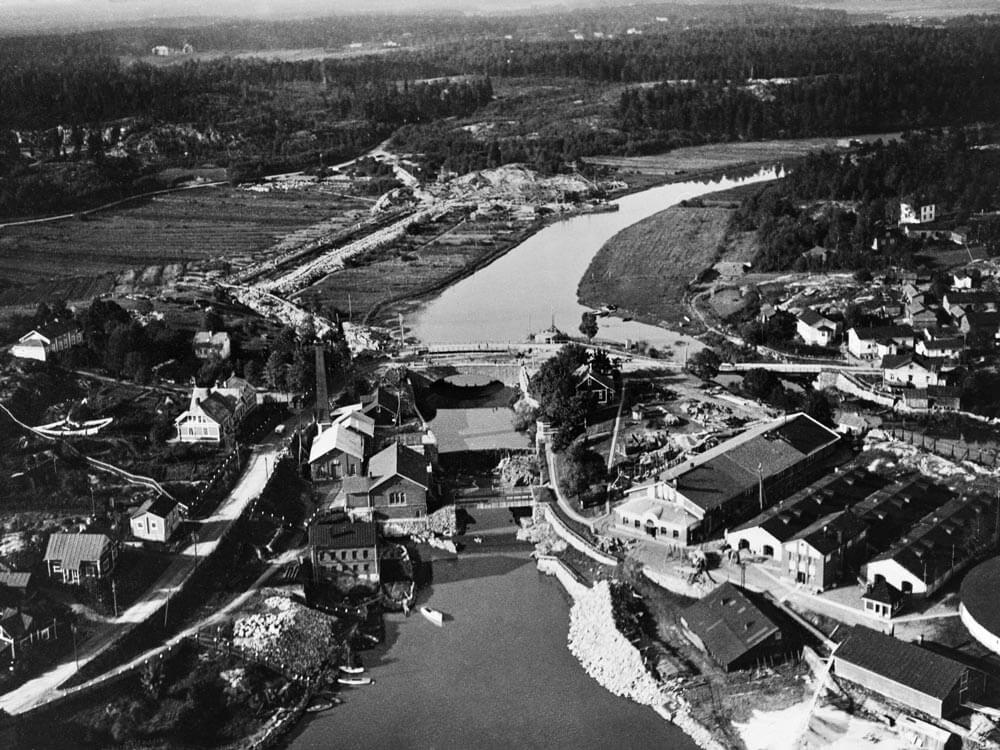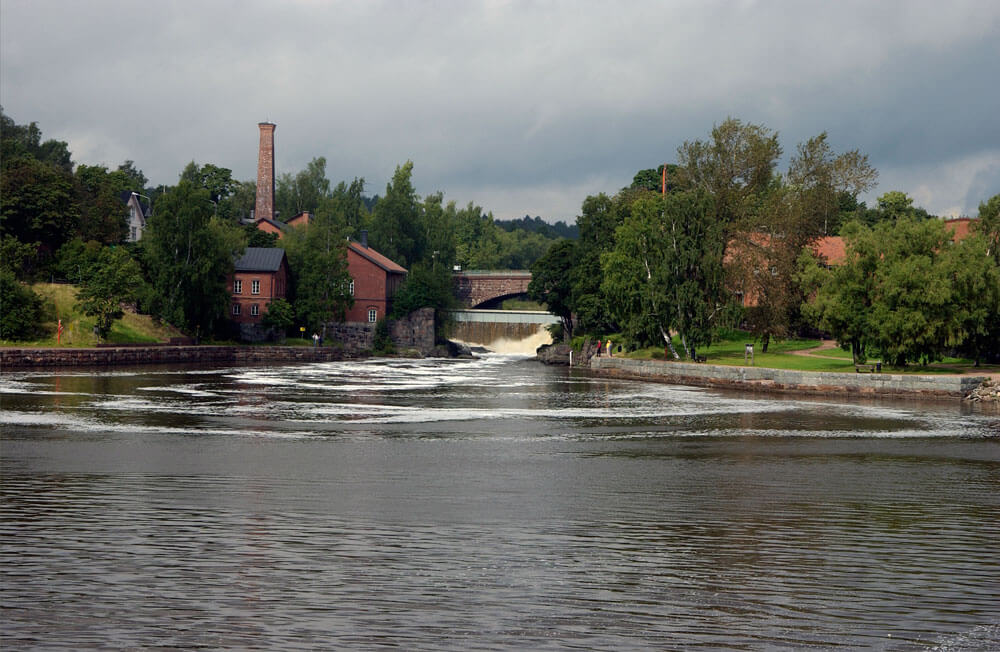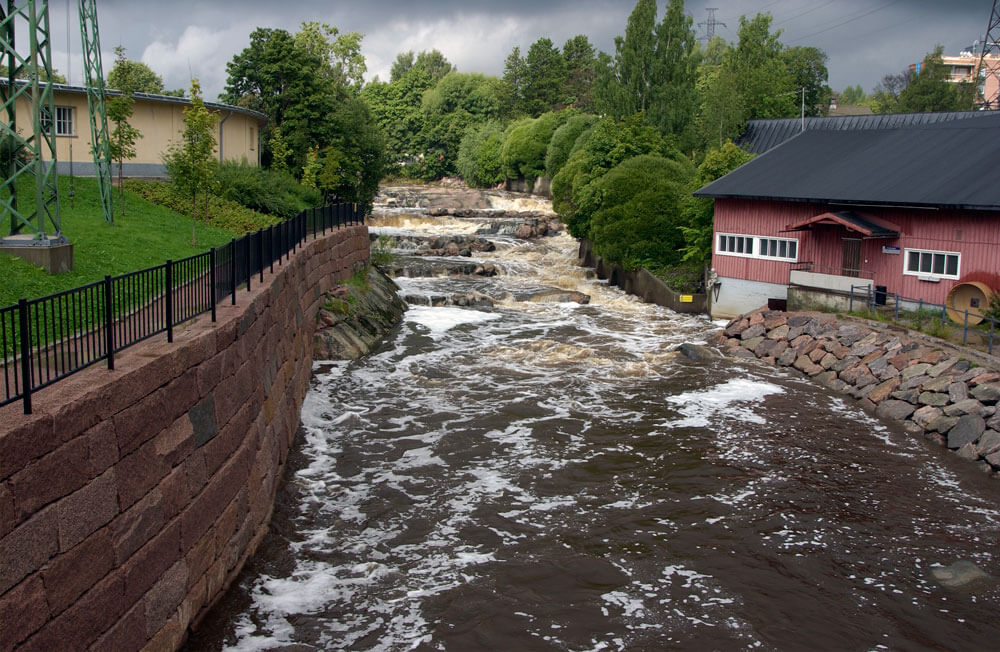The mouth of the Vantaanjoki river was inhabited already in the Middle Ages. The river could once be navigated as far as the current Martinlaakso district. Just over a thousand years ago the Vikings are known to have been active along the coast and waterways of Helsinki.
King Gustav Vasa of Sweden (1496–1560) founded Helsinki in 1550 to compete with Reval (now Tallinn). The king ordered citizens from other towns, including Porvoo, Ulvila, Rauma and Tammisaari, to settle Helsinki, threatening to take away their rights to trade if they disobeyed. The king was especially keen on having Dutch traders settle Helsinki, and some even arrived.
Helsinki was administratively part of Viipuri Province. The Old Town had around 600 residents. There was a school and hospital, as well as a two-storey town hall complete with a belfry and a jail in the basement; the town hall was located approximately where Johannesberg House stands today (Vanhankaupungintie 4). The town council convened in the town hill to decide on local matters, including which prisoners were to be hanged.
As its name suggests, the island of Kuninkaankartano was once the location of the “King’s Manor”, which was the administrative centre. The manor was a massive stone building that was used to house soldiers and officials. It also served as a model farm. Several mills were situated by the rapids. The Latokartano manor house supported the King’s Manor. One of the mills still stands as part of the Hydropower Museum. There was also a tavern on the island to serve the millers.



In the 1560s there was also a “ship manor” on the island – most probably on the Pornaistenniemi headland – where medium-sized ships were built. Probably due to the lack of oak, however, shipbuilding activities moved to Sweden in the 1620s. Before, oaks were considered the property of the king and could only be chopped down for building ships.
A certain amount of trading did take place here, though not as much as originally hoped for. The coastline was 150 to 300 metres closer than it is now. Timber products, furs and butter were exported from Helsinki, while the most important imported item was salt. The settlement did not thrive, and when Reval became part of the Swedish kingdom a decade later in 1560, the importance of Helsinki diminished. In 1571 the settlement was burned to the ground by Russian troops under Ivan the Terrible.
In 1640, when Christina was Queen of Sweden and Per Brahe was Governor General of Finland, Helsinki was moved down the peninsula to the deeper waters of Vironniemi, now Kruununhaka, which made it easier for ships to navigate.
Logs were floated down the Vantaanjoki river up until the 1950s. A loggers cabin was situated on Pornaistenniemi, and several classic Finnish films were made here depicting the romanticism of the loggers. Before the advent of refrigerators, large quantities of ice were required, even in summertime. To meet this demand, the “Ice King” Nyman used horses to drag huge blocks of ice out of the river. He then stored them under layers of sawdust, which kept them frozen throughout the summer, and enjoyed a good business supplying the ice to shops and other customers. The area also supported a small furniture industry still half a century ago, and lampreys were fished along the eastern section of the river and sold as delicacies.
In 2000, to mark its 450th anniversary, the City of Helsinki renovated the eastern fork of the Old Town Rapids (Vanhankaupunginkoski) and the connected backwaters as a birthday present to the city’s residents. At the same time, the Museum of Technology and Helsingin Vesi (“Helsinki Water”, now the Helsinki Region Environmental Services Authority HSY) renovated the hydropower and museum buildings. The embankments along the river were renovated by the Port of Helsinki in 1996, when a new pedestrian and cycle bridge was also constructed to connect Verkatehdas Park to Pornaistenniemi. The handsome bridge was named Matinkaari in honour of Matti Väisänen, an official at the City Office, and inaugurated on 3 November 1998.
Today the Old Town is a popular spot for fishing and outdoor recreation. It is also home to the most important nature reserve in Helsinki.